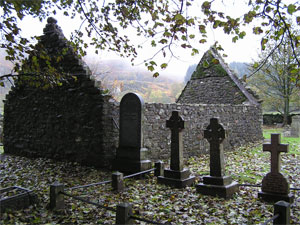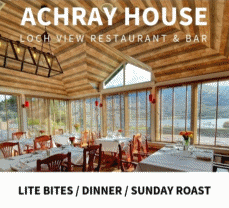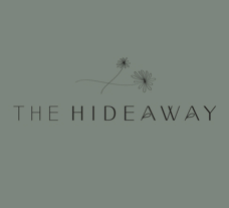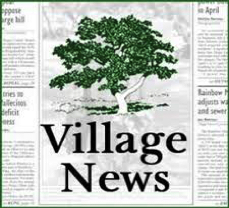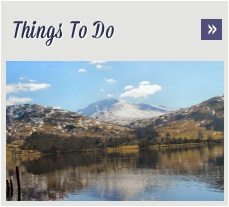ST FILLANS ON THE A85 IN
THE CENTRAL HIGHLANDS OF SCOTLAND.
CLICK HERE TO FIND US
19th March 2024 - village news update - View the PLace Plan Files
Heritage
St Fillans takes its name from a Celtic missionary from Munster, in Ireland, called Faolan, known as St Fillan the Stammerer or more likely, St Fillan the Leper. He came to Scotland in the 6th Century AD and established his 'headquarters' on the hill of Dundurn, with the intention of converting the local Picts to Christianity.
2024 - Rambling about Dundurn Parish from articles first published in the Villagers by The Old Crock (Jim Brierley). These can be accessed below as pdf files in a new window.(all corrected by the Swiss PDF Accessibility Validation Engine).
Part 1 - Click HERE to view, download and/or print the pdf file in a new window.
Part 2 - Click HERE to view, download and/or print the pdf file in a new window.
Part 3 - Click HERE to view, download and/or print the pdf file in a new window.
Part 4 - Click HERE to view, download and/or print the pdf file in a new window
Part 5 - Coming soon.
November 2023 - An interesting map of St Fillans has been provided by Robin Spearing incorporating some notes added by Jim Brierley. It is an exact copy of a feuing plan of St Fillans, dated 1857.
It shows the feus and village acres, as well as a list of the respective Tenants and Occupiers. You will have to scroll and zoom in and out a lot to view each part of the document.
'Acres' in pleural form originally meant Land or Estates.
Click on the image below to open in a pdf file in a new window.
September 2023 - The village Heritage Group visit Drummond Estate Archive. CLICK HERE for their report.
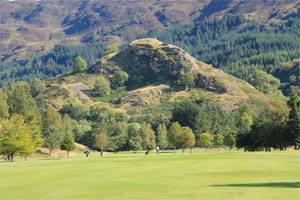
Dundurn or St Fillans Hill (Dunfillan) is almost certainly the Duinduirn that is mentioned in the Annals of Iona for AD683, which was under siege when the Scots were attacking the Picts. The Picts and then the Scots were dominant forces in our Dark Ages and Dundurn was a frontier outpost of the Pictish kingdom. It was of strategic significance, guarding one of the major routes into Strathearn, from the neighbouring kingdom of Dalriada to the west. Dundurn derives from the Gaelic tradition of simply 'saying what you see': Dundurn, or dun dórn, means 'Fort of the Fist". Although it may require a bit of imagination to see it now, the hill was thought to be fist-shaped.
Excavations by a team from Glasgow University have found evidence of two successive stone and timber forts built on the hilltop. The discovery of iron nails at the site proves that Dundurn was one of only two such forts in Britain that used nails in its construction. Many other artefacts have been discovered, including a silver strap fastener, shaped as a horses head - a design fashionable in the 7th Century.
By the 16th Century the Scottish Clans had established their feuding ways and these warring factions continued raiding, pillaging and murdering each other for the next few centuries.
Neish Island and the MacNab's revenge
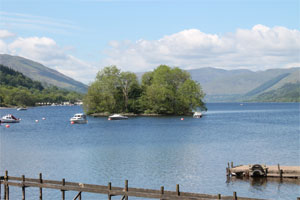
One such episode is of the Clan Neish and the MacNabs Revenge! Offshore from St. Fillans is a man-made island or crannog called Neish, scene of a brutal massacre that took place during the reign of James VI.The Clan Neish, which had almost been wiped out as a result of their predatory raids on their neighbours, took occupation on the island to shelter from their enemies. For a long time, they behaved and remained unmolested, but a long simmering feud with archenemies the MacNabs from Killin came to a head in 1612.
Just before Christmas, the MacNab chief sent a servant to the town of Crieff for provisions for the coming festivities. However, on his way back to the MacNab home, the servant was beaten and robbed of everything he had and could do nothing but return to his master empty handed. The MacNabs placed responsibility on the Neishes for this attack, and so the chief's twelve sons were sent out to Neish Island to get revenge! The brothers, who were said to have been particularly strong and athletic, set off to Loch Earn carrying their boat on their shoulders. When they arrived at the loch, the men rowed over to Neish Island and killed every Neish there, bar a small boy who managed to hide under a bed. He swam ashore and it is said that all the Neishes extant are descended from the lad who escaped that day. As trophies of their revenge attack, the MacNabs took back the heads of the Neishes along with any plunder they could carry. When the twelve returned they presented to the chief what they had come away with and the piper struck up the Pibroch of Victory. The head of the Neish Clan and the boat appear on the MacNab Coat of Arms.
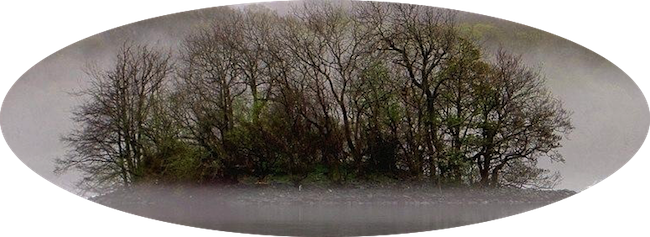
Before 1800, St Fillans as a village did not exist and was just a tiny 'port', giving access to the Loch. (This gave rise to the name of the local farm, Little Port). At that time there were two settlements in Glentarken, Easter and Wester. Wester Glentarken was part of the grounds associated with the Derry Farm Feu and Easter Glentarken, on the other hand, was a Cotten Town connected with the weaving trade. There were two mills on the burn flowing through Easter Glentarken along with a lime kiln. This Clachan sheltered several families eking out a basic existence growing flax on the fertile pastures and hillside above.
The social upheaval of the Highland clearances was responsible for the demise of the settlement, but the remains can still be seen today. Many of the former inhabitants emigrated and the remainder moved down to the loch side and established Port Mhor or Meikleport, which grew as a small clachan with thatched cottages and a limekiln. In 1817, Lord Gwydr, whose wife Clementina Drummond had inherited the vast Drummond Estate, released land for development along the loch shore and the hamlet was renamed St. Fillans. Local and townspeople bought land and built substantial villas for summer residences or retirement homes.
Stobie’s Map of 1783 shows Moral or Morell as a settlement on the hillside above Tynereoch.

An advert in the Perthshire Advertiser dated 29th September 1814 stated -
On 23rd November 1815 there was a similar advert to the one dated September 1814. However, it now appears to have changed to include that part of the lands of Little & Meikle Port, exclusive of the arable land to be given to the villagers as marked out.
Could it be that the village was founded in 1816 and not 1817?
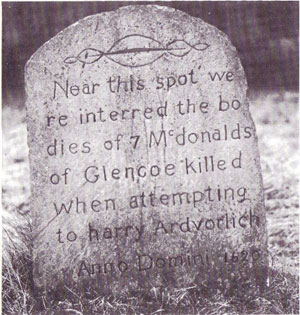
Another gory incident occurred in 1589. The first Stewart of Ardvorlich (Alexander) married Margaret, the sister of the King's Keeper of the Royal Forest of Glenartney, John Drummond. A party of MacGregors killed some deer in the Royal Forest and were sent home with their ears cut off, muttering threats of vengeance. Later, John Drummond was captured when hunting alone and beheaded. His head was carried in a plaid back to Loch Earn. They stopped at Ardvorlich for refreshment and the lady of the house (Drummond's sister) invited them in. She gave them bread and cheese and left the room. On her return, set upright with a piece of bread and cheese in its mouth, was the blood-stained head of her brother. She flew demented from the house into the hills, where she was eventually found bereft of reason.
She was pregnant at the time and gave birth to James (later to become Major James Stewart) who throughout his life bore the stamp of the terrible experience which had befallen his mother. It was said he never, ever spared a MacGregor.
In 1590, the Government in Edinburgh condemned to death the whole MacGregor clan because of their cruel and mischievous behaviour. John, Lord Drummond, was one of those who were granted letters of fire and sword against them. Drummond joined Stewart of Ardvorlich and proceeded to the Braes of Balquhidder, where they slew twelve men with the name MacGregor.
In the following century, there was a raid on Ardvorlich and at the east gate entrance there is a stone commemorating the incident. The inscription is somewhat faded but declares, "Near this spot we re-interred the bodies of 7 Mcdonalds of Glencoe killed when attempting to harry Ardvorlich".
A mile further east there is another stone at the entrance to a small parking space at the lochside. It marks the temporary burial place in 1660 of Major James Stewart of Ardvorlich. His body was later exhumed and buried in the family burial place at Dundurn. Even after his death, his enemies were determined to dishonour his corpse and planned to intercept his funeral. Fortunately the cortege heard about their intentions and en route to Dundurn, made a detour and buried him at a secret location.
-------------------------------
St. Fillans 2017 project
2017 was the 200th anniversary of the renaming of our village
Jim Brierley spent many hours researching the history of our Village and created an amazing Timeline Exhibition which was held in the Sandison Hall over the weekend of the 1st, 2nd, 3rd September 2017.
The St Fillans Festive Weekend and The St Fillans Ball also celebrated the anniversary.
We can save the past for the future
-------------------------------
Snippets from the village archive
--------------------------------
1832: Edinburgh Encyclopaedia
Conducted by David Brewster
“Among these most recent improvements, we wish particularly to notice the village of St.Fillans, near Loch Earn. Built by Lord Gwydir on the Drummond Estate because it proves that nothing is wanted to render the cottages of Scotland as neat and clean as those of England, and the habits of the people as orderly, but a little attention and perseverance by the proprietors. The rose and honeysuckle have here taken the place of the dub and the midden, and the residents have learnt to think that there may be a merit and a happiness in neatness and cleanliness”.
--------------------------------
1836: Gazetteer of Scotland
Observes
“St.Fillans was formerly a wretched hamlet, denominated Portmore, but it is now one of the sweetest spots in Scotland. The village has been reared and encouraged by the attention of Lord and Lady Willoughby d’Eresby (lately Gwydir), and here the traveller is delighted to find the people altogether loosing their taste for dunghills, and thatch, and peat-reek, and fast adopting a better one for slate, cleanliness and honeysuckle. The houses all have gardens attached to them, and are even in many cases surrounded by sweet shrubs and flowers. There are also a few villas built, for families who may wish to settle in this delicious spot. It is annually, in autumn, rendered a scene of high festival, by a meeting of the St.Fillans Society, which was instituted in 1819, for the purpose of giving prizes to competitors in certain national sports, and as a benefits society for imparting aid to indigent and distressed members, widows and orphans. Their festivals are usually attended by persons of condition, male and female from all parts of the Highlands”.
--------------------------------
Dundee Courier Wednesday July 16th 1913
Motorists exceed the Speed Limit at St Fillans
Several motorists who exceeded the ten-mile speed limit at St Fillans Village on different dates towards the end of June and the beginning of July were somewhat severally dealt with by Sheriff Sym at Perth yesterday.
- Laidlaw admitted having on 1st July, driven a motor car at a speed of over 16 miles per hour. The accused explained that his speedometer was not working properly, and he did not know what speed he was travelling. A fine of £2 2s with the alternative of seven days imprisonment was imposed.
- McArthur was charged with having driven at a speed of over 20 miles per hour. The accused failed to put in an appearance, and after hearing evidence the charge was found proven, and a fine of £4 4s with the option of eight days imprisonment was imposed.
- Brown who also failed to appear in Court was charged with having driven at a speed of 19 miles on the 29th June. He was further charged with having failed to produce his licence when requested by the police. After evidence the accused was found guilty on both charges, and the Sheriff imposed fines of £4 and £1 on the respective charges.
- McGregor admitted having driven a car at a speed of 17 miles per hour, and was fined £4 10s with the alternative of 7 days imprisonment
- For travelling at a speed of 17 miles per hour on a motor Cycle - Catto was fined £2 10s or 7 days.
( perhaps we need to bring back the Village Bobby)
--------------------------------
Some more Snippets
St Fillans what’s in a name?
1445: Exchequer Rolls - Andrew Mercer, Chamberlain of Strathearn – had a fee of £10 for the custody of the manor of Loch Earn, and in the following year he received, 53s 4d for the custody of the island in Loch Earn
1461: Exchequer Rolls - Robert Mure, Chamberlain of Strathearn – had a fee of £3 6s 8d as rent, from the lands Port of Lochearn
1590: Point’s Map - Shows the lands of Port with five properties, and the lands of Mewy or (Morrell) on the hillside near Tynreoch
1683: Adair’s Map - Shows only the lands of Port
1742: Extract from the Report’s of the Annexed Estates - Peter Mclichonnell (McWhannell) has a lease of the fourth of Meikleport for 19 years, from Whitsunday 1742 and resides thereon
1745: Extract from the Report’s of the Annexed Estates – James Stewart, now at west end of Loch Earn, has a lease of the town and lands of Little Port, commencing 1745, and is on for 16 years, which he has wholly sublet to John Mclichonnell (McWhannell) who lives thereon
1750: Roy’s Map - Shows the lands of Meikle Port with seven properties
1755 – 1769 extracts from the Report’s of the Annexed Estates -
Meikle Port – Parlan McFarlane, Alexander Dochardich, Alexander Cameron, James Drummond, Duncan Ferguson, Patrick Mclichonnell, and five cotters – Eleven families
(The only place on this parish for planting a village in is Meikleport and the east end of Lochearn. There is a considerable quantity of plain, arable ground in it, which would admit of many divisions to accommodate the supernumerary hands on the rest of the lands)
Little Port – John Mclichonnell and one subtenant – two families
Morrell – James Drummond’s heirs and seven cottars – eight families
1783: Strobe’s Map - Shows Portmore with seven properties and Littleport with one
It also shows an area named Struie situated between Portmore and Littleport also shows the village of Morrell on the hillside between Littleport and Tynreoch
‘So it would appear that we started out as the Manor of Lochearn, followed by Port of Lochearn, then Meikleport and in 1783 Portmore, renamed St Fillans in1817. However villagers can make up your own minds, but the question still remains,
What became of Struie and Morrell?’
This heritage was last updated in September 2023.



